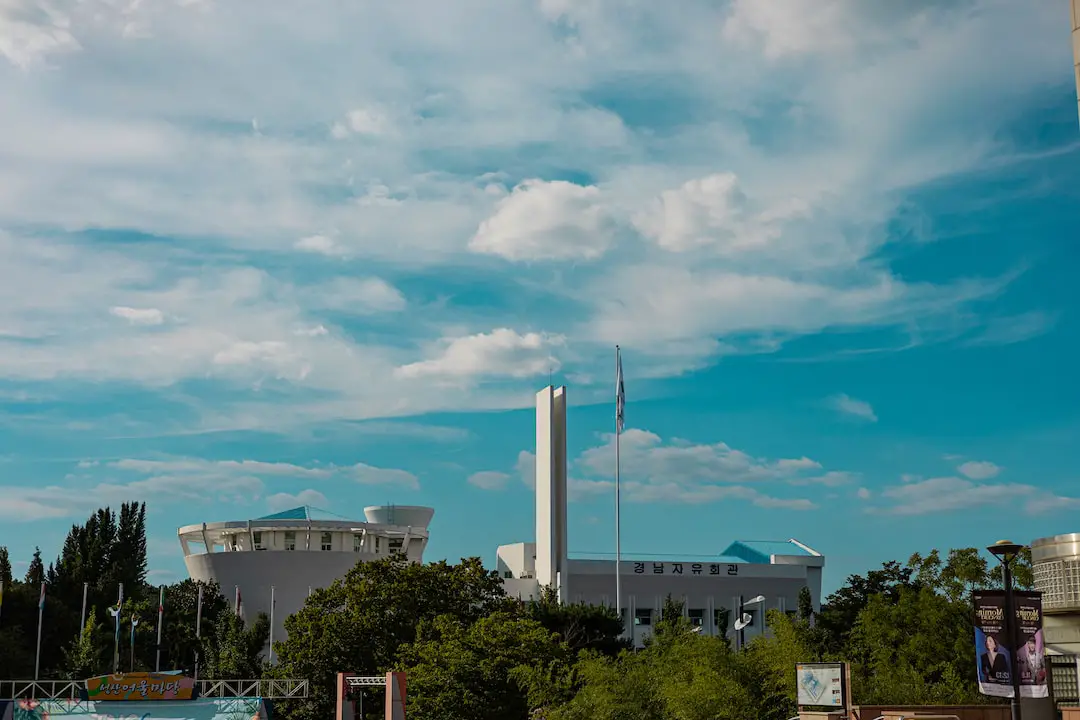
Nestled in the heart of South Korea, Changwon emerges as a city where the tapestry of its architecture tells a story of transformation and innovation. It’s a place where the past and present coalesce, creating a unique urban landscape that’s as dynamic as it is diverse. As I stroll through the streets of Changwon, I can’t help but marvel at the seamless blend of traditional hanok houses with cutting-edge modern structures. It’s a testament to the city’s ability to honor its heritage while embracing the future.
The Roots of Changwon’s Architectural Identity
Changwon’s architectural journey began centuries ago, with humble hanok homes dotting the landscape. These traditional Korean houses, with their graceful tiled roofs and wooden beams, were designed in harmony with nature. They reflected the Confucian principles of balance and simplicity. As I’ve explored these historic dwellings, I’ve been struck by the ingenuity of their ondol heating systems and the cool elegance of their wide front porches, known as maru.
Industrialization: A Catalyst for Change
Fast forward to the 1970s, and you’ll find Changwon at the forefront of South Korea’s industrial upswing. The city was designated as the country’s first planned city, specifically tailored for industrial development. This era ushered in a wave of modernist architecture, characterized by functionality and minimalism. Factories and apartment blocks sprang up, embodying the city’s newfound role as an industrial hub. The skyline began to transform, and so did the lives of its residents.
Embracing Modernity with a Respect for the Past
As the 21st century rolled in, Changwon didn’t just adapt; it thrived. Architects and city planners embarked on a Mission to infuse modernity into the city’s fabric without erasing its historical identity. The result? A striking mosaic of old and new. Take a walk through the city center, and you’ll see contemporary buildings like the Changwon Exhibition Convention Center (CECO) standing proudly alongside traditional hanoks. It’s a visual dialogue between eras that’s utterly captivating.
Green Architecture: Changwon’s Sustainable Future
In recent years, Changwon has embraced green architecture with open arms. The city’s commitment to sustainability is evident in projects like the Sangnam International Business District. Here, eco-friendly buildings equipped with the latest technology aim to reduce carbon footprints. Rooftop gardens and energy-efficient designs are no longer novelties; they’re the norm. It’s inspiring to see a city not just grow, but evolve with the well-being of the planet in mind.
Changwon’s Architectural Landmarks
Let’s talk landmarks. The Changwon City Hall, with its sleek lines and glass façade, is a symbol of the city’s progressive governance. Meanwhile, the Seongsan Art Hall, with its undulating curves, showcases the city’s cultural flair. These structures aren’t just buildings; they’re embodiments of Changwon’s spirit and ambition.
Living Spaces: The Evolution of Changwon’s Residential Architecture
The evolution of Changwon’s architecture is perhaps most palpable in its residential areas. From the compact efficiency of apartment living to the resurgence of modernized hanoks, the city offers a living space for every taste and lifestyle. It’s a place where you can enjoy the communal vibrancy of high-rise living or the tranquil privacy of a single-family home.
FAQs About Changwon’s Architecture
- What makes Changwon’s architecture unique?
Changwon’s architecture is a blend of traditional Korean elements and modern, sustainable design. This duality creates a unique urban landscape that respects its past while forging a green future.
- Can visitors tour traditional hanok houses in Changwon?
Yes, visitors can explore hanok villages in Changwon to experience the traditional Korean architecture firsthand. These areas often offer cultural programs and accommodations as well.
- How is Changwon promoting sustainable architecture?
Changwon is promoting sustainable architecture through initiatives like green building certifications, energy-efficient public projects, and urban planning that prioritizes environmental conservation.
Conclusion
In conclusion, Changwon’s architecture is a living chronicle of its journey from a historical settlement to a modern, eco-conscious city. Its buildings are more than mere structures; they’re the bearers of stories, values, and aspirations. As Changwon continues to grow, its commitment to sustainable development and architectural innovation ensures that the city’s skyline will always be a reflection of its dynamic spirit. For those of us who’ve witnessed Changwon’s transformation, it’s clear that the city’s architectural evolution is not just about aesthetics; it’s about creating a better future for its residents and the world at large.
Whether you’re a real estate investor, a homeowner, or simply an admirer of urban design, Changwon’s architectural landscape offers a fascinating glimpse into the soul of a city that’s constantly reinventing itself. It’s a place where history is preserved, the present is celebrated, and the future is being built—one sustainable brick at a time.